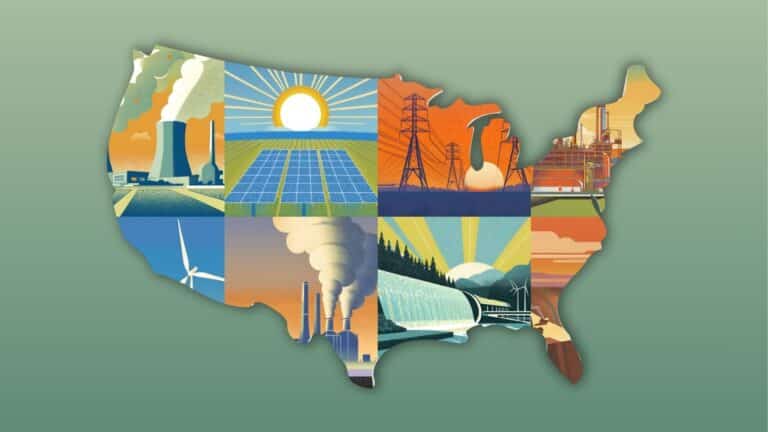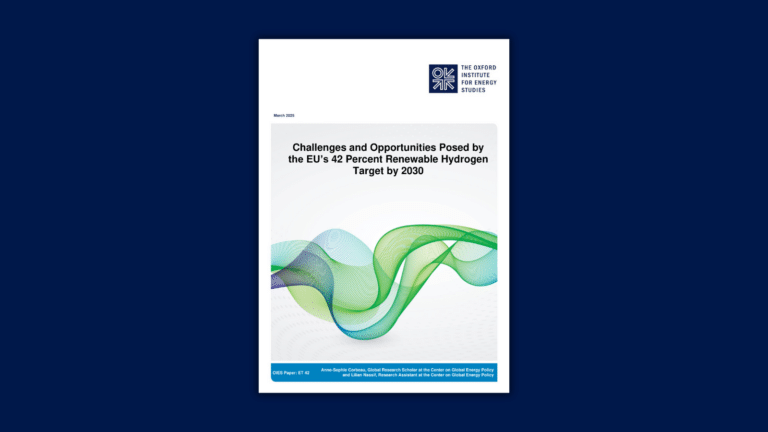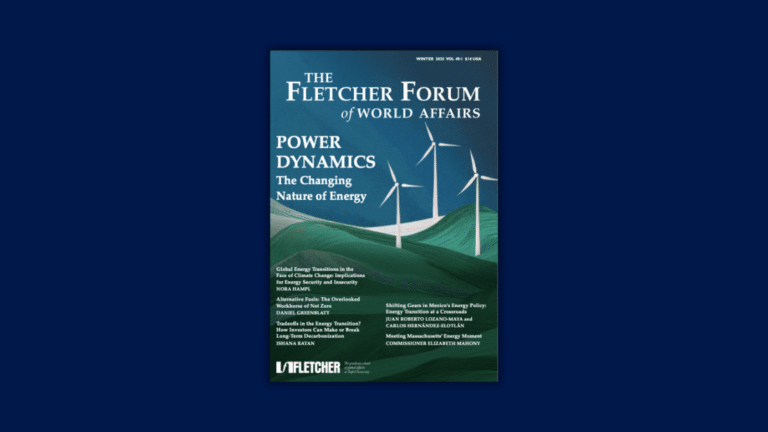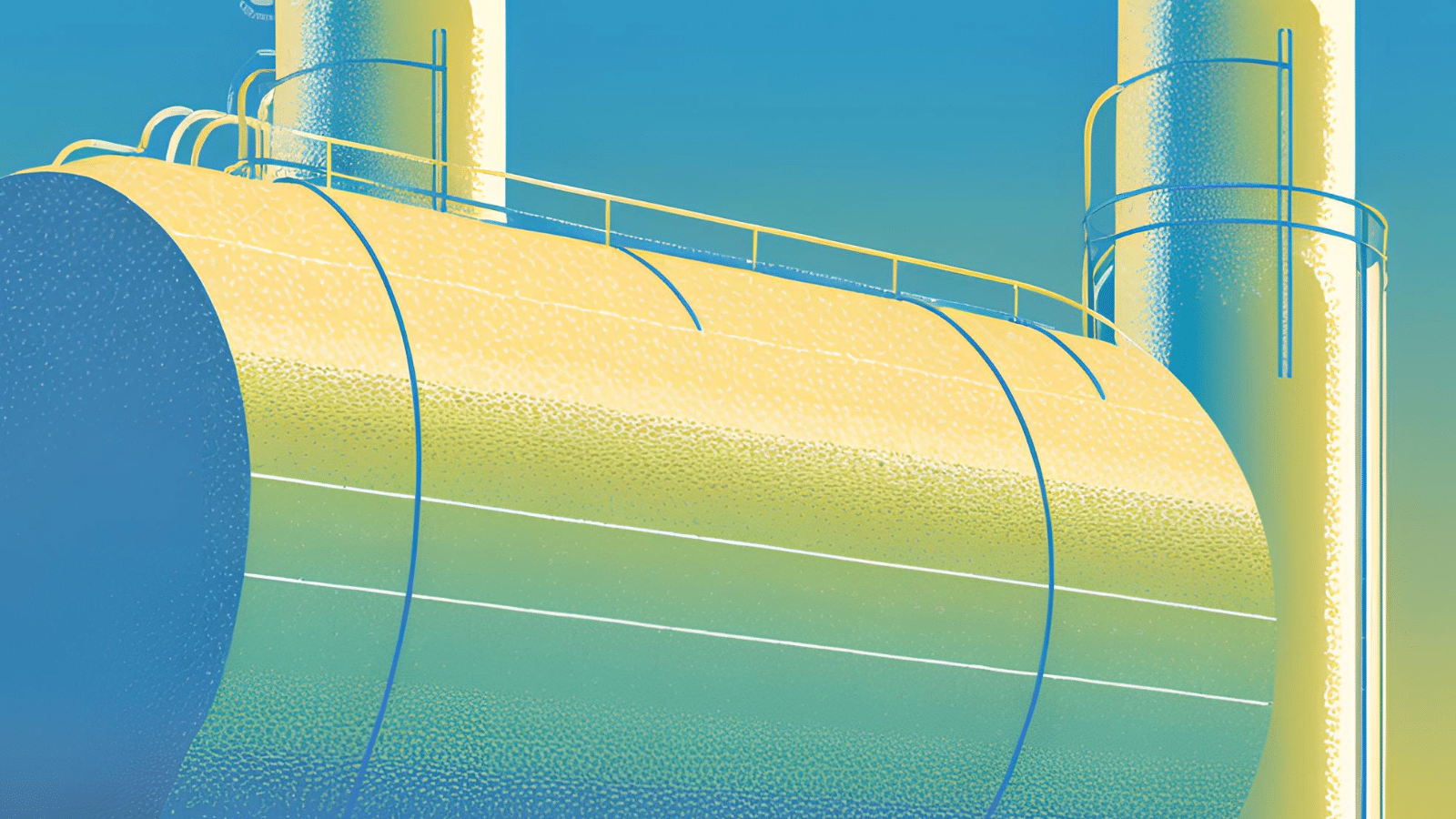This website uses cookies as well as similar tools and technologies to understand visitors’ experiences. By continuing to use this website, you consent to Columbia University’s usage of cookies and similar technologies, in accordance with the Columbia University Website Cookie Notice.
Energy Explained
Insights from the Center on Global Energy Policy
This Energy Explained post represents the research and views of the author. It does not necessarily represent the views of the Center on Global Energy Policy. The piece may be subject to further revision. Contributions to SIPA for the benefit of CGEP are general use gifts, which gives the Center discretion in how it allocates these funds. Rare cases of sponsored projects are clearly indicated.
For a full list of financial supporters of the Center on Global Energy Policy at Columbia University SIPA, please visit our website at Our Partners. See below a list of members that are currently in CGEP’s Visionary Circle. This list is updated periodically.
When the Inflation Reduction Act (IRA) was passed in August 2022, it triggered unprecedented enthusiasm among potential hydrogen suppliers.[1] More than two years later, progress on final investment decisions (FIDs) for low-emissions hydrogen projects has been slower than anticipated. Beyond the absence of final guidance regarding the IRA’s hydrogen production tax credits (PTC), a key reason for this state of affairs is that US demand for low-emissions hydrogen remains elusive. Unlike Europe, the US relies more on a “carrot”-based approach within a technology-neutral framework. The idea of mandating a percentage of renewable hydrogen, like Europe does,[2] is unlikely to find bipartisan support.
And yet stimulating demand for low-carbon hydrogen is essential to enable the US long-term objective of large-scale production and use of low-emissions hydrogen.[3] This post introduces measures drawn from the hydrogen sector and beyond in other countries that could be used to address this issue, whether at the federal or state level or by the private sector.
The US Hydrogen Demand Problem
The primary challenge to the widespread uptake of low-emissions hydrogen in the US continues to be reducing the cost gap between that hydrogen and its fossil fuel–based equivalent without resorting to stringent measures that force end-users to switch to lower-carbon solutions.
The US government has initially supported hydrogen supply mainly through generous PTCs (up to $3/kilogram [kg]) that are structured to incentivize lower carbon intensity hydrogen. Additionally, the Department of Energy (DOE) has initiated a $7 billion hubs program (H2hubs) intended to kickstart the US low-emissions hydrogen market by bringing together demand, production, and transport.[4] However, despite the presence of a substantial existing fossil fuel–based hydrogen market (~10 million tonnes [Mt]), there are no incentives for buyers to purchase the still more expensive low-emissions hydrogen.[5] Demand is critical to developing large-scale billion-dollar projects: without signed offtake contract agreements, developers struggle to raise debt to finance projects. Only 1.6 Mt of US low-emissions hydrogen projects (mostly low-carbon) have reached FID as of mid-2024.[6] Due to the low interest from US buyers, many US hydrogen and ammonia projects are considering exporting to Europe and Asia.[7] Consequently, the DOE announced in July 2023 that it would earmark $1 billion to a demand-side initiative supporting H2Hubs.[8] It then selected the Hydrogen Demand Initiative (H2DI), led by EFI, and charged it with researching and developing demand-side support mechanisms for enhancing the hubs’ market potential.[9]
Potential Solutions at the Federal Level
Two main federal-level methods of reducing the cost gap that have become popular globally could be applied profitably in the US:“pay-as-bid” auctions and contracts for difference (CfD) auctions.
- Pay-as-bid auctions: the European Hydrogen Bank is awarding financing as a fixed premium in €/kg to renewable hydrogen producers.[10] The first auction took place in 2023 and seven projects were awarded €720 million in April 2024. The auction sparked concerns about the low premium reached (<€0.5/kg), which may impact the projects’ ability to reach FID (none have done so to date). Indeed, one project withdrew from the process in October 2024.[11]
- Contract for Difference auctions: CfDs can be structured as agreements used by governments to provide subsidies for new technologies, including clean hydrogen. They most typically support producers, with the government guaranteeing the difference between the market price of clean hydrogen and a predetermined strike price. If the product’s selling price is below the strike price, the government pays the difference to the producer; if the selling price is above the strike price, the producer pays back the difference to the government. Based on these general principles, governments can adapt the mechanism to their specificities (such as the UK’s Low Carbon Hydrogen Agreement[12]). Alternatively, CfD auctions can be structured to support the buyer instead of the producer, for example by giving them support representing the cost difference between the existing polluting option and the cleaner hydrogen option.[13]The H2Global mechanism[14] also uses the principle of closing the price gap: the Hydrogen Intermediary Company GmbH (Hintco) enters into 10-year purchase agreements with suppliers and one-year sales agreements with consumers, with the gap filled by external funding.
Potential Solutions at the State Level
Potential state-level solutions include CAPEX incentives, demand-side support, and demand requirements. Some of these mechanisms are already in place in the US, such as:
- The Colorado Hydrogen Bill: The State of Colorado passed a House bill (HB23-1281[15]) in 2023 providing tax credits to users of clean hydrogen in hard-to-abate sectors (such as heavy-duty vehicles, aviation, and other hard-to-decarbonize end uses). The income tax credits are up to $1/kg for hydrogen under 1.5 kgCO2 per kgH2 and therefore aligned with the IRA’s lowest carbon intensity tiers and with the currently proposed 45V guidelines in terms of additionality, deliverability, and hourly matching. However, the subsidies by user are capped. While aligning Colorado’s bill with the existing federal framework is commendable, the final IRA guidelines have yet to be published and may not align with this House bill. The caps on total funding available to corporations may also pose challenges to large offtakers.
- The extension of Low Carbon Fuel Standards (LCFS) to hydrogen-derived fuels: LCFS are credit markets designed to promote the use of lower-carbon fuels by setting an annually decreasing carbon intensity limit for transportation fuels. These programs are already active or under consideration in several US States,[16] with California pioneering the standards. LCFSs, or similar models, could be extended to include hydrogen and derivatives in hard-to-decarbonize transportation sectors,[17] such as heavy-duty trucking, maritime transport and aviation, or manufacturing and industrial sectors.
Private Sector Initiatives
The transition to low-emissions hydrogen might hinge on understanding how different sectors can adapt to higher-cost inputs.
- Sectors that can pass down the cost: Some sectors, such as those already using hydrogen or the steel industry, are among the most obvious users of hydrogen.[18] But one needs to consider the impact of the offtake of more expensive hydrogen on the final product rather than on the intermediary sectors, and whether the final end user is ready to pay a premium. The automotive sector is a good example, as low-carbon steel could be sold to car manufacturers who could then sell a green(er) car at a premium. The final consumer premium might end up being only a fraction of the total cost of the car.[19] Similar examples exist for the ammonia/food value chain or sustainable aviation fuel (SAF),[20] though the pass-through of the additional cost must be done with care so as not to impact the intermediaries (e.g., farmers in the food value chain) disproportionally.
Further, demand-side coalitions can aid in aggregating demand, connecting buyers and producers and creating economies of scale while signaling market interest:
- Green steel for cars: A coalition of non-profit organizations has created the Race to Green Steel to incentivize car manufacturers to use green steel in their cars.Several car companies have already shown willingness to buy green steel: Mercedes, for instance, has signed a binding agreement with H2 Green Steel for its European operations and is considering the same for North America.[21]
- A SAF Buyer’s Club: there have been attempts to organize similar groups for SAF. The Sustainable Aviation Buyers Alliance (SABA), for instance, was created to accelerate the transition to net-zero aviation fuels by establishing a credible marketplace for SAF certificates (SAFc) while incentivizing demand and mass manufacturing of the product.[22] In April 2024, SABA announced a landmark series of agreements to purchase approximately 50 million gallons of high-integrity SAF for nearly $200 million.[23] The SABA model is relevant for hydrogen as it provides a framework for overcoming the cost premium of a product that is still three to five times more expensive than the alternative.
Conclusion
Given the US policy context, CfD auctions may be among the most effective tools for stimulating US clean hydrogen demand at the federal level in the short term, if they can be scaled; current funds earmarked by the DOE to support such measures may fall short of what is truly needed to launch the clean hydrogen industry in the US.
Private-sector initiatives have also helped drive successful market shifts in the US before and the clean hydrogen space could benefit from such leadership. These initiatives could be implemented more swiftly than government programs, helping to aggregate demand and stimulate investment in hydrogen projects while complementing public sector efforts.
Ultimately, an approach that coordinates federal, state, and private-sector efforts, and thereby aligns incentives, fosters public-private partnerships, and carefully structures financial mechanisms like CfDs, may be optimal for the US to overcome the demand-side barriers currently hindering its hydrogen market and accelerate the development of a robust clean hydrogen economy.
CGEP’s Visionary Circle
Corporate Partnerships
Occidental Petroleum Corporation
Tellurian Inc
Foundations and Individual Donors
Anonymous
Anonymous
the bedari collective
Jay Bernstein
Breakthrough Energy LLC
Children’s Investment Fund Foundation (CIFF)
Arjun Murti
Ray Rothrock
Kimberly and Scott Sheffield
[1] https://home.treasury.gov/policy-issues/inflation-reduction-act
[2] https://observatory.clean-hydrogen.europa.eu/eu-policy/renewable-energy-directive
[3] https://www.hydrogen.energy.gov/library/roadmaps-vision/clean-hydrogen-strategy-roadmap
[4] https://www.energy.gov/oced/regional-clean-hydrogen-hubs-0
[5] https://www.hydrogen.energy.gov/docs/hydrogenprogramlibraries/pdfs/24005-clean-hydrogen-production-cost-pem-electrolyzer.pdf?sfvrsn=8cb10889_1
[6] https://hydrogencouncil.com/en/hydrogen-insights-2024/
[7] https://www.spglobal.com/commodityinsights/en/market-insights/latest-news/energy-transition/043024-north-american-clean-ammonia-producers-eyeing-exports-to-europe
[8] https://www.energy.gov/articles/biden-harris-administration-jumpstart-clean-hydrogen-economy-new-initiative-provide-market?utm_medium=email&utm_source=govdelivery
[10] https://ec.europa.eu/commission/presscorner/detail/en/ip_24_2333
[11] https://climate.ec.europa.eu/news-your-voice/news/winners-first-eu-wide-renewable-hydrogen-auction-sign-grant-agreements-paving-way-new-european-2024-10-07_en
[12] https://www.nortonrosefulbright.com/en/knowledge/publications/8f7105a1/low-carbon-hydrogen-agreement
[13] https://www.hydrogeninsight.com/policy/exclusive-european-commission-is-considering-contracts-for-difference-for-green-hydrogen-offtakers/2-1-1561729.
[14] https://www.h2-global.org/the-h2global-instrument
[15] https://leg.colorado.gov/bills/hb23-1281
[16] https://theincubex.com/states-and-provinces-with-lcfs-markets-2/
[17] https://rmi.org/how-states-can-use-low-carbon-fuel-standards-to-incentivize-clean-hydrogen-derived-fuels/
[18] https://www.liebreich.com/the-clean-hydrogen-ladder-now-updated-to-v4-1/
[19] https://www.transportenvironment.org/uploads/files/Green-steel-in-cars-briefing_July-2024.docx.pdf
[20] https://www.iea.org/reports/global-hydrogen-review-2024
[21] https://stegra.com/news-and-stories/mercedes-benz-and-h2-green-steel-announce-agreements-in-both-europe-and-north-america
[22] https://flysaba.org/how-we-work/
[23] https://flysaba.org/2024/04/17/sustainable-aviation-buyers-alliance-announces-historic-agreements-to-purchase-sustainable-aviation-fuel-certificates-to-grow-investment-in-clean-fuel-technologies/
More on Energy Explained Energy Explained
Q&A: Trump’s Executive Order on US Domestic Mineral Production
This Energy Explained post represents the research and views of the author. It does not necessarily represent the views of the Center on Global Energy Policy. The piece...

Energy and Climate Issues During the Trump Administration’s First 100 Days
President Donald Trump has made energy a clear focus for his second term in the White House. Having campaigned on an “America First” platform that highlighted domestic fossil-fuel growth, the reversal of climate policies and clean energy incentives advanced by the Biden administration, and substantial tariffs on key US trading partners, he declared an “energy emergency” on his first day in office.

India’s Ambitious Green Steel Plan Hinges on Mitigating Coal
This Energy Explained post represents the research and views of the author. It does not necessarily represent the views of the Center on Global Energy Policy. The piece...

How the Next US President Could Shape Energy and Climate Policy
November’s election for president of the United States will have crucial implications for the nation’s and world’s energy and climate policies.

Relevant
Publications
Challenges and Opportunities Posed by the EU’s 42 Percent Renewable Hydrogen Target by 2030






